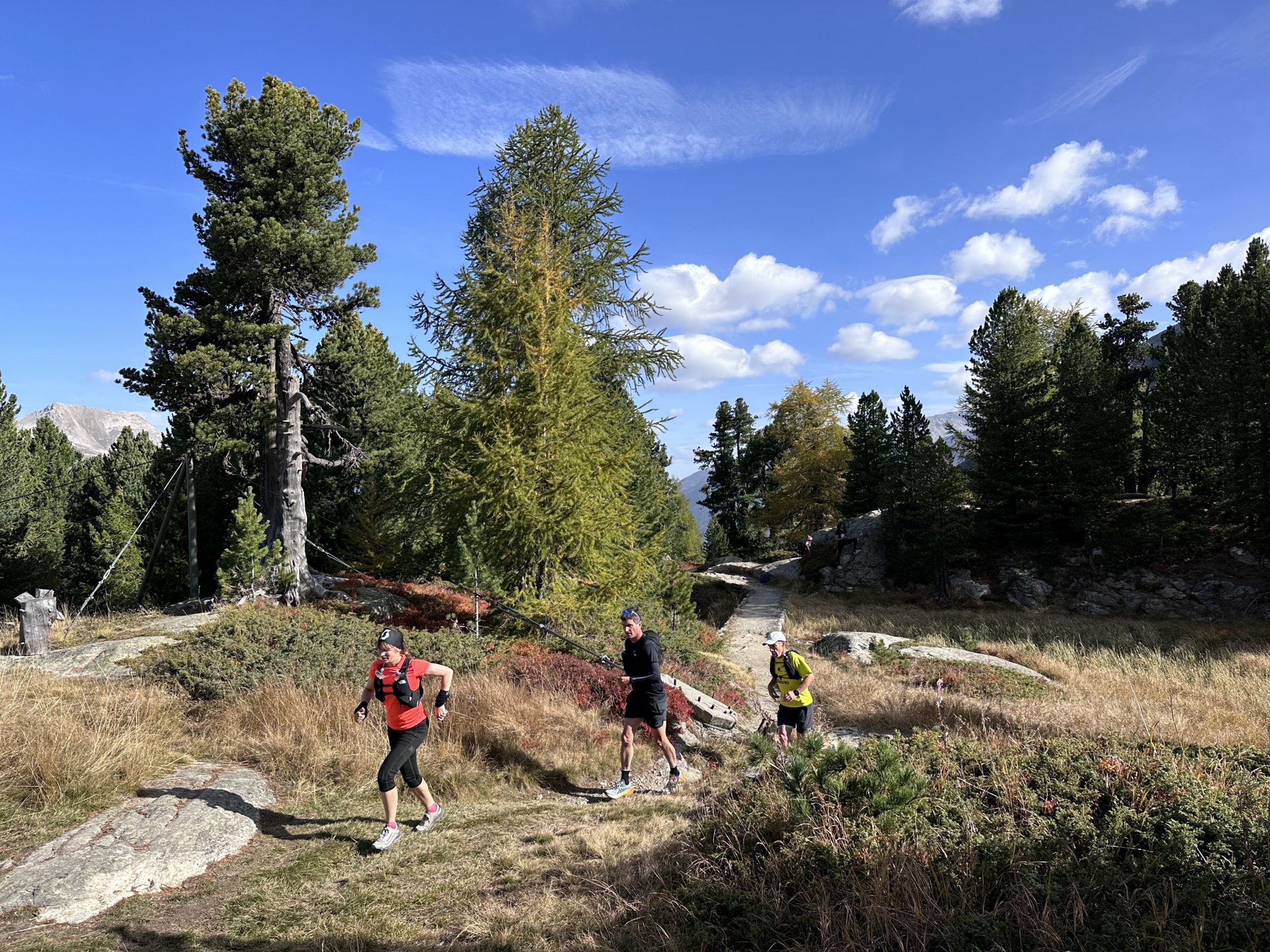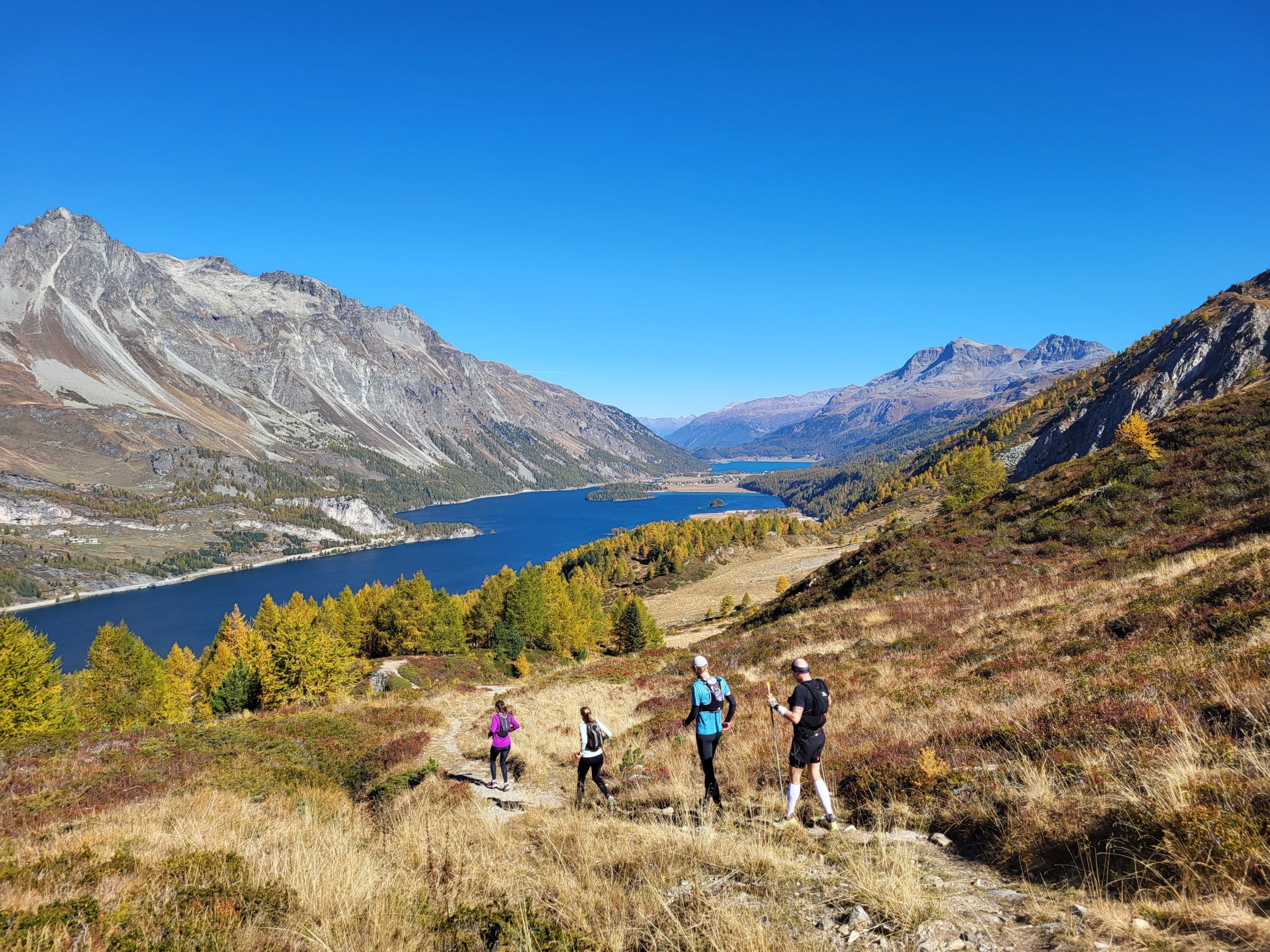We are in the middle of the triathlon season, but that doesn’t mean we should neglect other endurance sports. Trail running can be a great complement for cyclists and triathletes—both to boost performance and to add variety for body and mind. Let’s take a look at why trail running can make a real difference in preparing for your target race.
Article published in the training section of TrimaX magazine, issue no. 232. By J. B. Wiroth, PhD, Exercise Physiology
This article is provided by Trimax Magazine, a leading triathlon publication. Every month, you’ll find free articles, interviews, race tips, gear advice, and more on triathlon, cycling, running, duathlon, and swimrun. Click here for more information.
The Specifics of Trail Running
In trail running, uphill segments—and especially downhill ones—require significant strength to counteract gravity. As a result, fatigue sets in much faster than in “classic” road running. After the activity, muscle damage can be quite significant. We’ve all experienced sore quadriceps after running a trail race without proper preparation!
A recent study by Marlène Giandolini demonstrated that fatigue in trail running depends heavily on the type of effort—particularly the dominant form of muscle contraction, which varies between flat, uphill, and downhill running. Running uphill or downhill presents very different challenges compared to running on flat terrain.
Prolonged downhill running causes significant tissue damage, which can be indirectly observed through massive increases in plasma concentrations of creatine kinase, myoglobin, or inflammatory markers.
During prolonged efforts (such as ultratrails), a type of nervous system fatigue known as central fatigue can occur—an effect recently studied by Guillaume Millet. The researchers sought to understand why central fatigue is more pronounced in ultratrail running than in ultracycling. In fact, the decline in maximal voluntary muscle force—one of the main indicators of fatigue—is much greater in trail running.
Why? Several hypotheses are being explored, including biochemical disruptions and structural changes in muscle fibers.
Regardless of the current state of scientific understanding, one thing is clear: training the neuromuscular system (specific strength) is a strategic priority in trail running.
“Trail running improves proprioception and strengthens the joints. After a trail training cycle, you’ll feel much more ‘solid’ at the joint level.”
 5 Reasons Trail Running Is Great for Triathletes
5 Reasons Trail Running Is Great for Triathletes
1. Technical Training
Due to the irregular terrain, trail running demands much more cognitive effort than road or track running. Dodging rocks, jumping over branches, avoiding slips—these actions make the course far more technical.
In addition, unstable terrain forces athletes to optimize their motor skills—how they move and navigate through space. Running on mud, sand, or rocky surfaces requires precise footwork to maintain performance. In trail running, you’re constantly adapting your stride in real time to suit the terrain and gradient. This puts your nervous system under high stress.
2. Improved Strength and Muscular Endurance
The continuous alternation of ascents and descents in trail running requires significantly more muscular effort than road or track running. The degree of elevation and the runner’s weight both play a role.
Uphill work is concentric (muscle fibers shorten during contraction), while downhill running is eccentric (muscle fibers lengthen during contraction). Eccentric work is especially demanding and leads to micro-tears in the muscles—responsible for post-workout soreness—which result in strength gains over time.
3. Injury Prevention
Depending on the variety of surfaces (trails, woods, grass, rocky terrain), trail running improves proprioception and strengthens the joints. After a trail training cycle, you’ll be noticeably more resilient at the joint level.
4. Training Variety
Trail running lets you diversify your training without being tied to speed or time limits. It’s a more natural and regenerative form of exercise—both physically and mentally.
5. Awakening the Senses
Trail running is an “ancestral” activity—once used by early humans to travel and hunt by tracking animals. It’s a natural movement that restores deep contact with nature and awakens the senses: sight, smell, and touch—all experienced in a natural environment.

In Practice
- First of all, it’s essential to invest in trail running shoes with lugged soles. Running on technical trails with standard running shoes is unsafe—especially if the ground is wet or slippery. It’s best to choose half a size larger to prevent your toes from hitting the front of the shoe on descents, which can cause pain or black toenails.
- Progress gradually with distance. Keep in mind that elevation significantly increases training load. As a rule of thumb: 100 m of elevation gain equals about 1 km on flat terrain. So, a 10 km run with 500 m of elevation gain is roughly equivalent to a 15 km flat run.
- Complement your trail workouts with leg strengthening exercises, starting with concentric movements (e.g., squats, lunges, calf raises) and progressing to plyometric drills (e.g., squat jumps, bounds, jumping lunges, box jumps).
- For longer outings, always carry water and a snack. In the mountains, don’t forget a waterproof jacket and hat—useful in case of a storm or physical issues. A hydration pack (Camelbak-style) can make all the difference.
- Trail running is great during the off-season to break away from the triathlon routine, but it can also be maintained throughout the main season (April–September) with one session per week.


